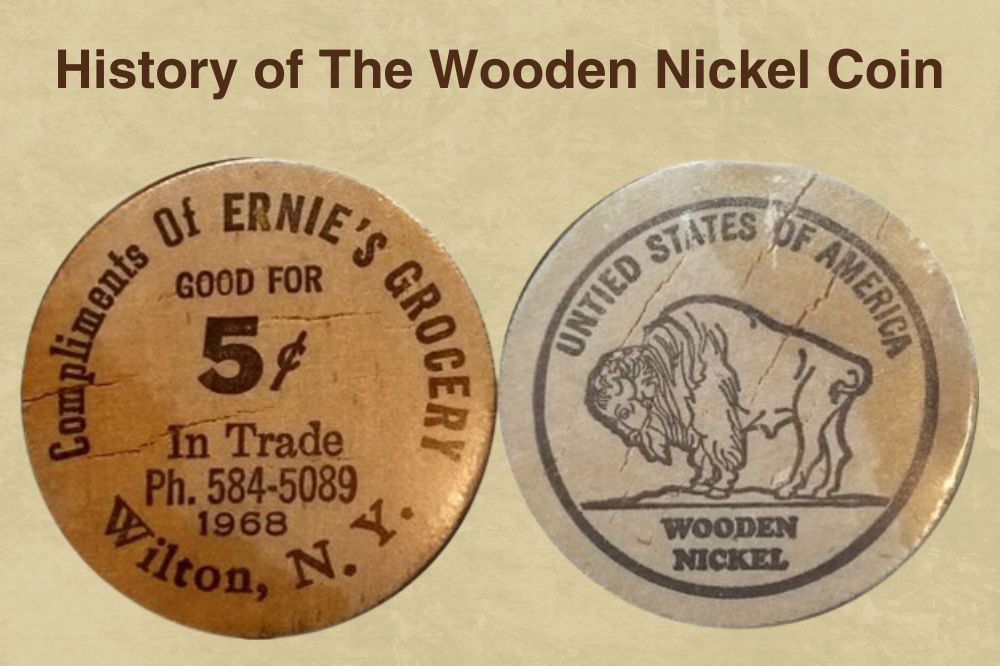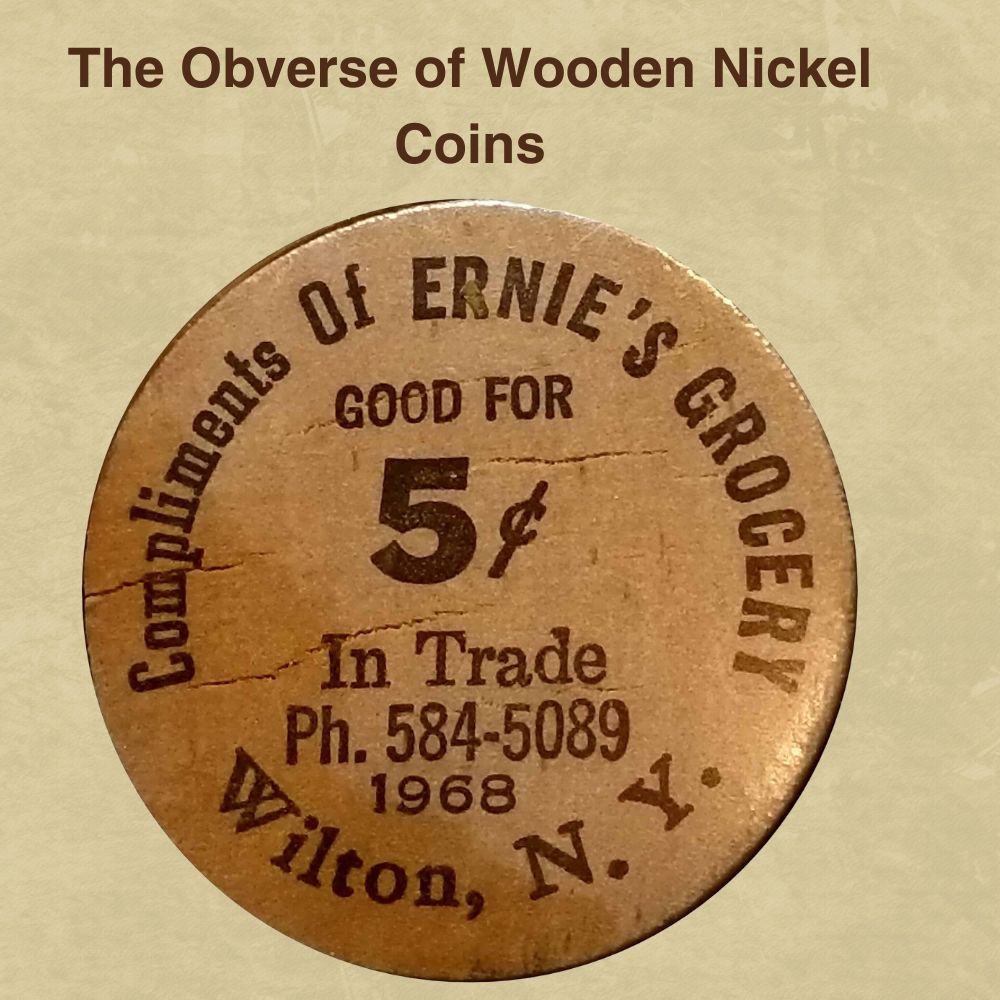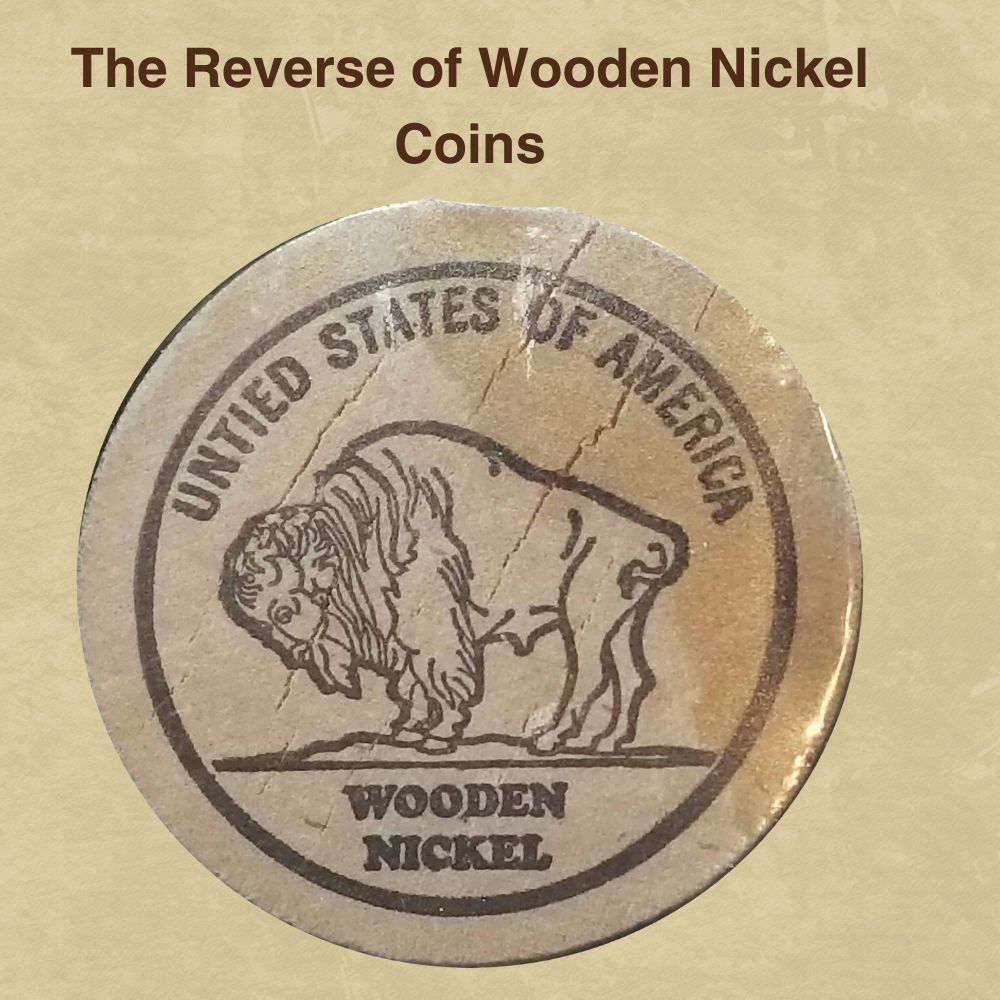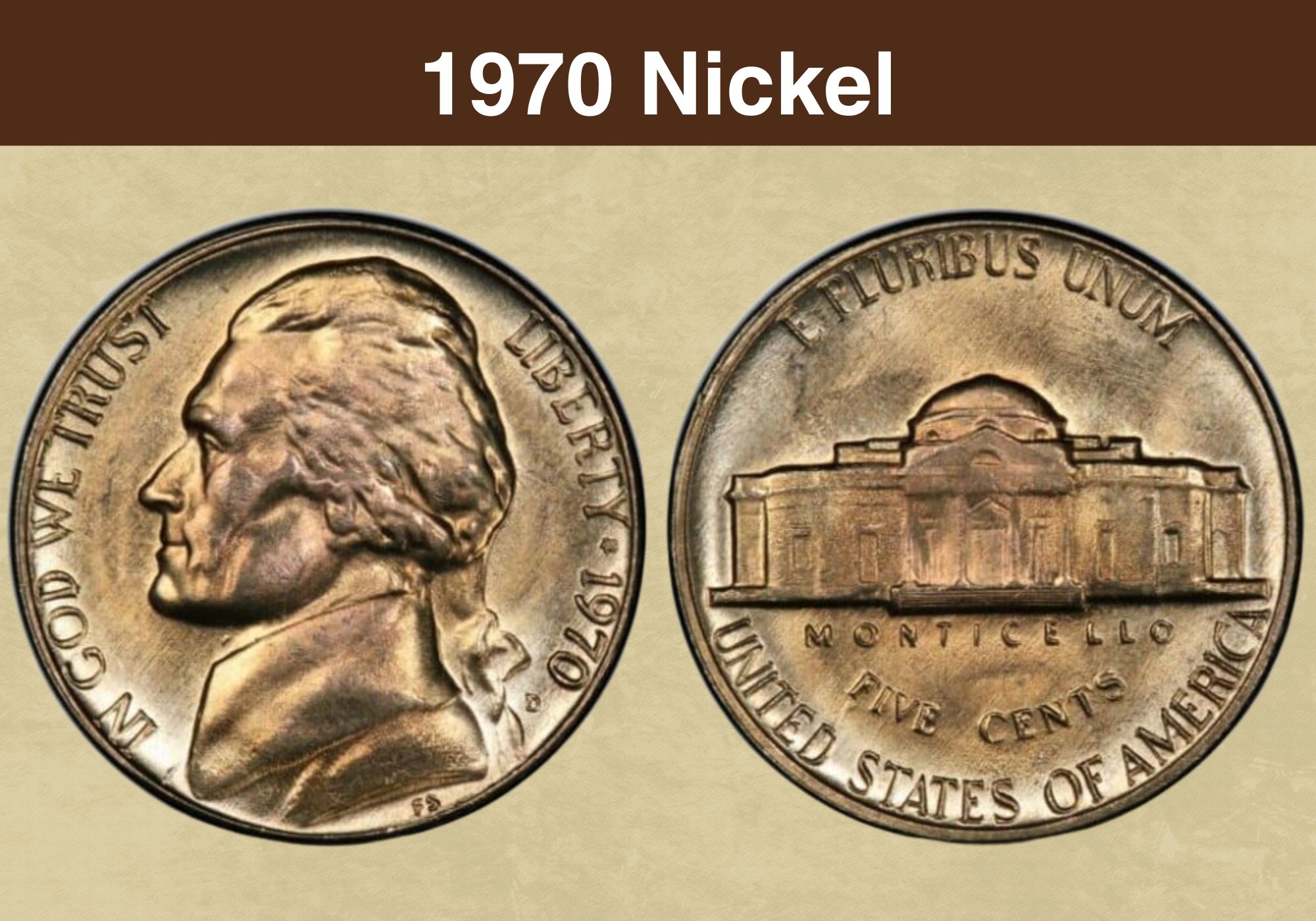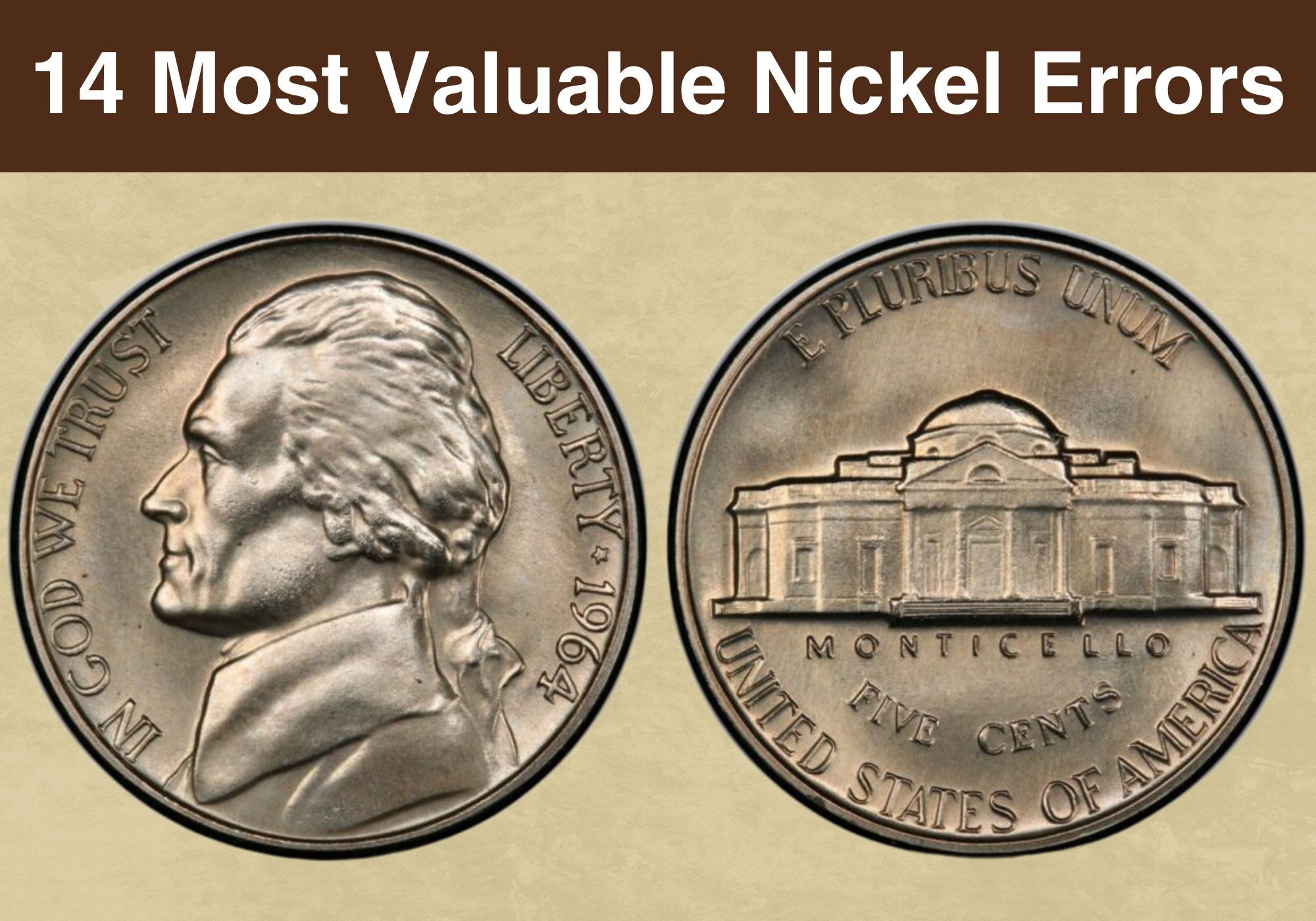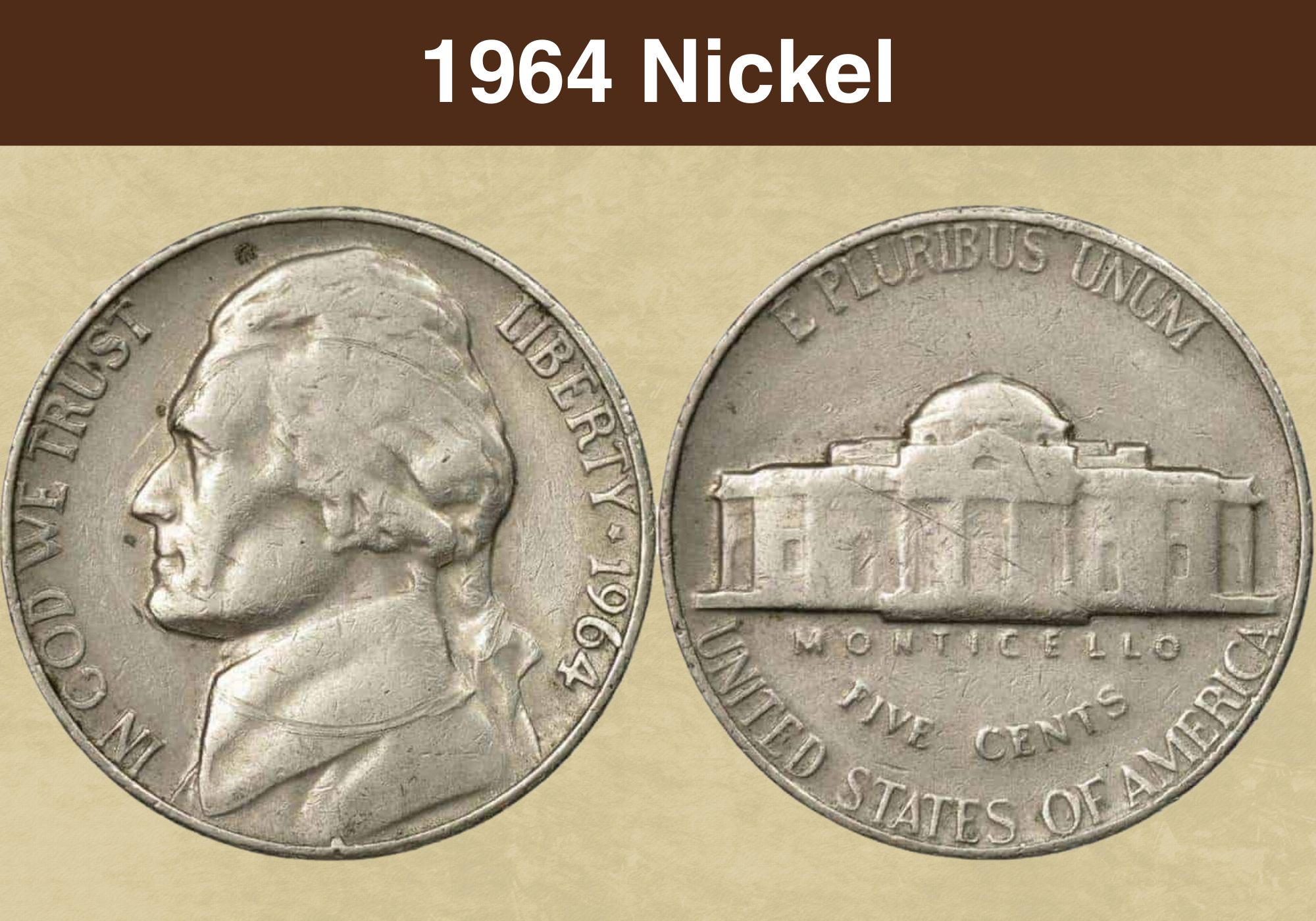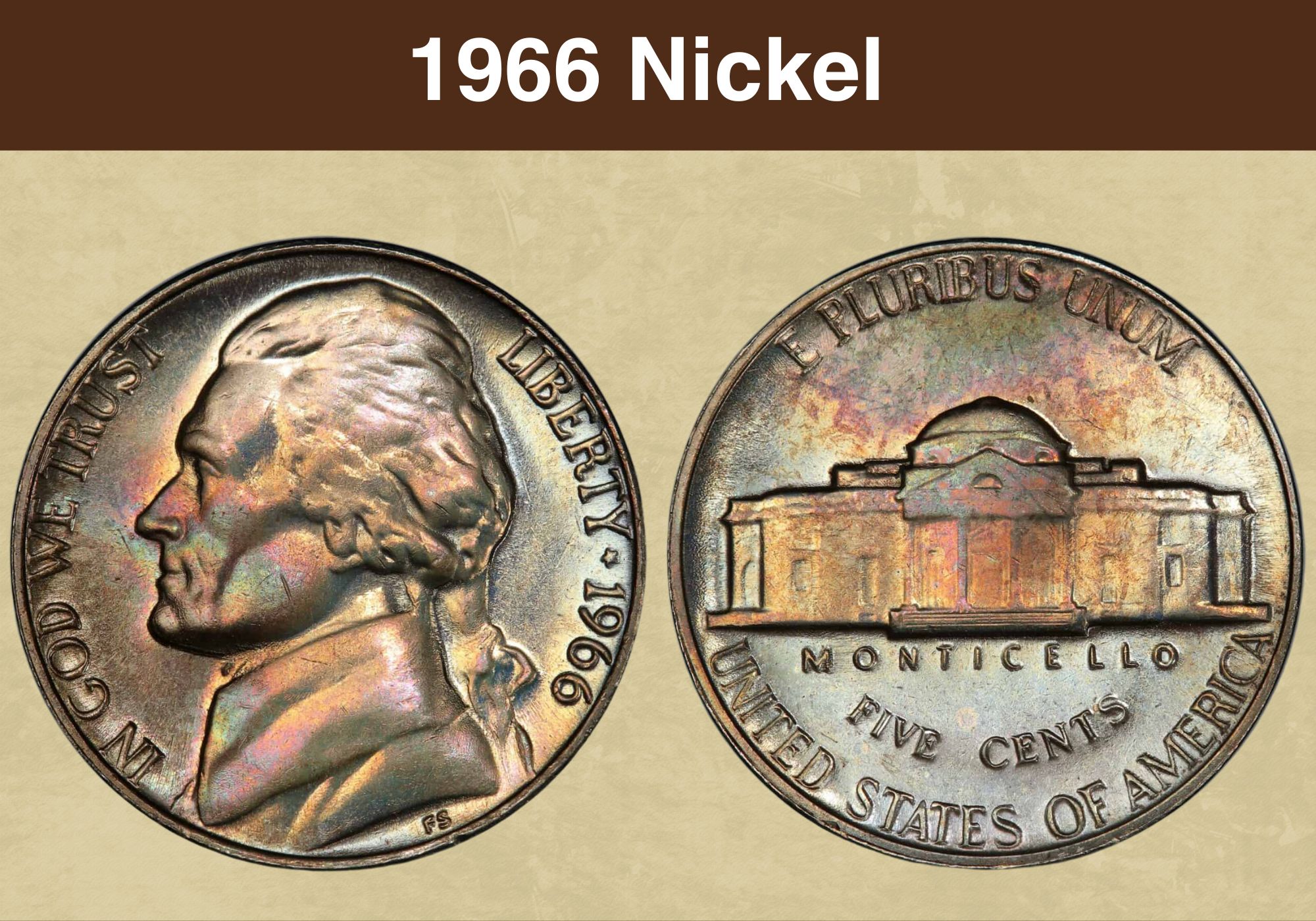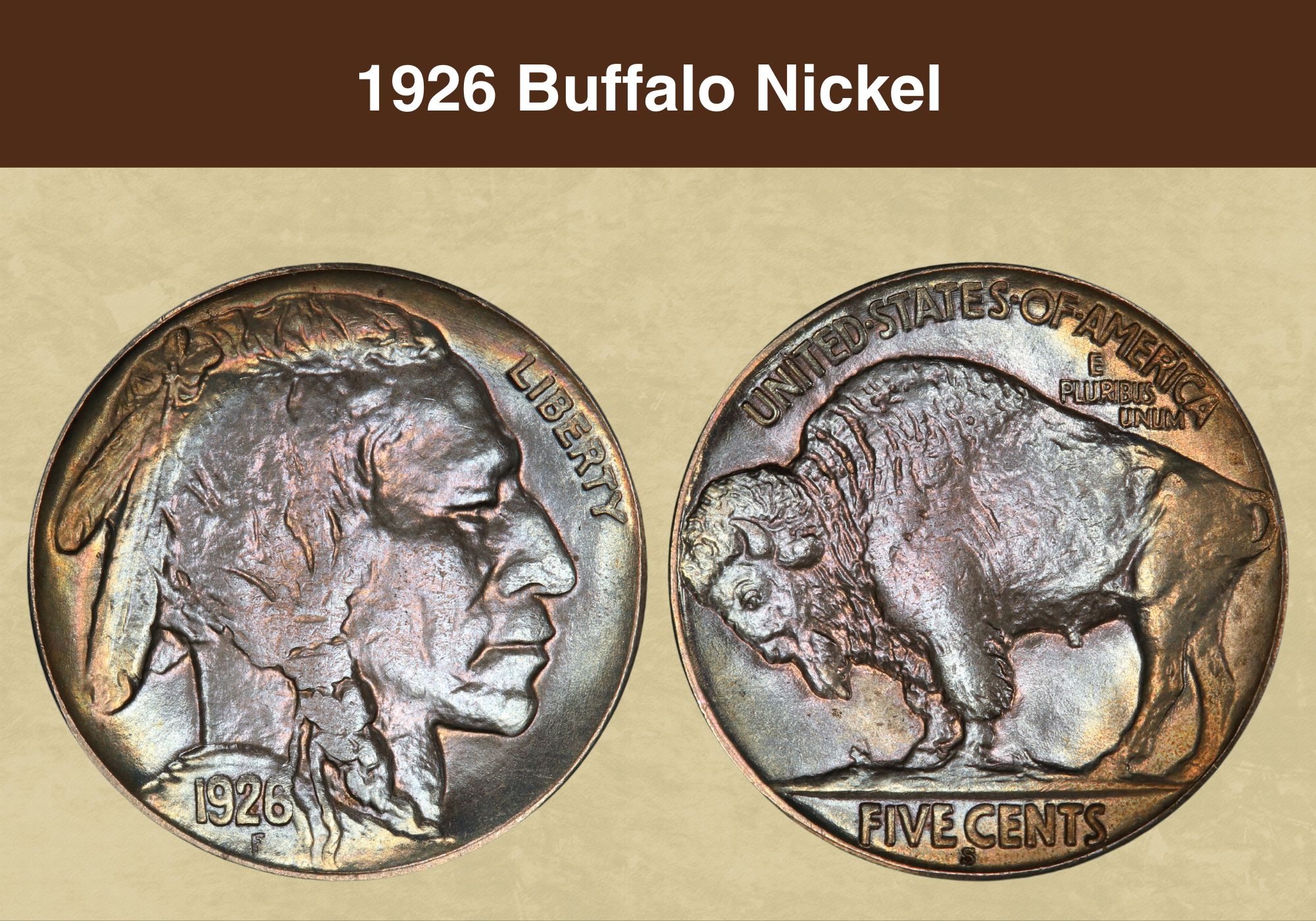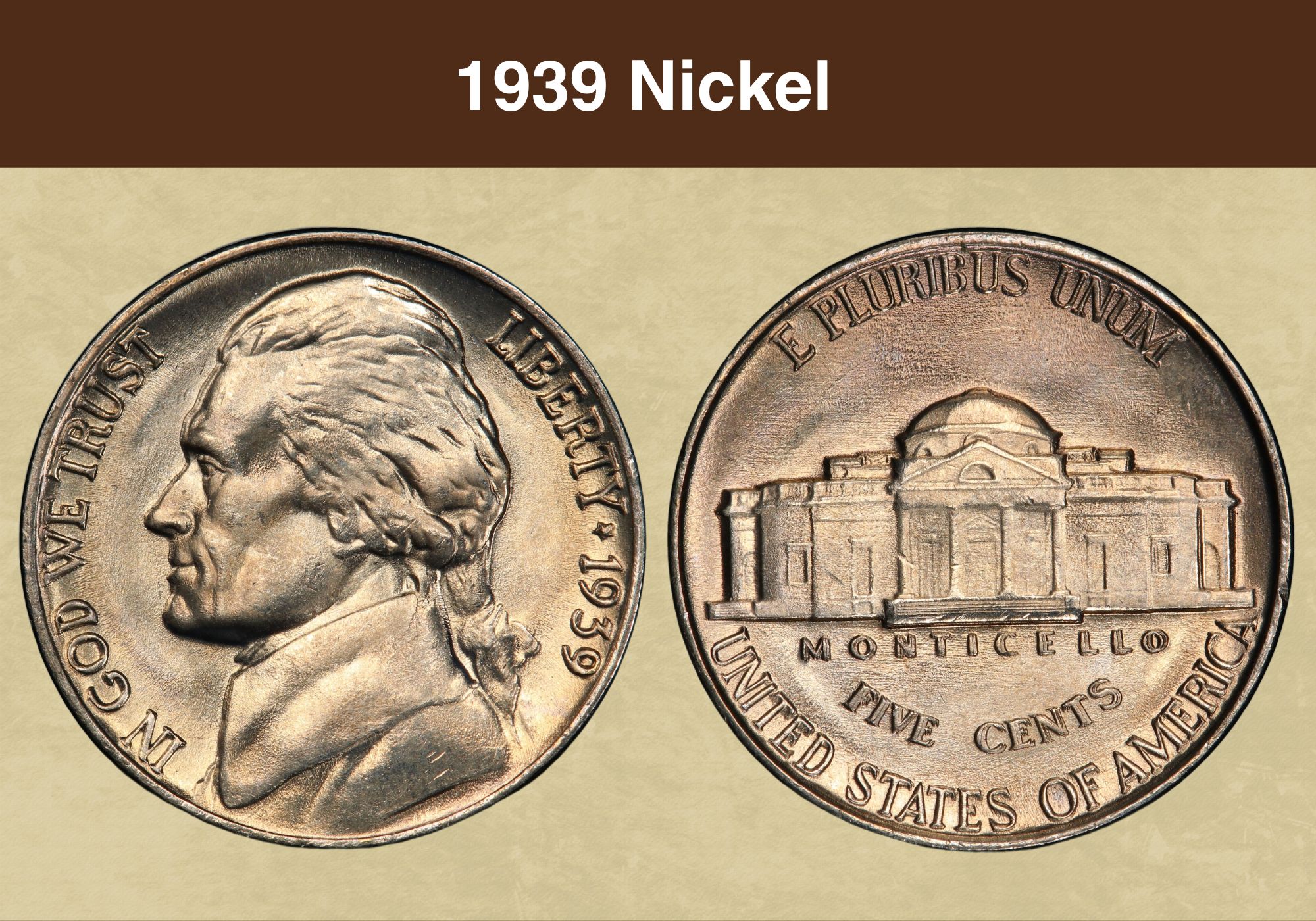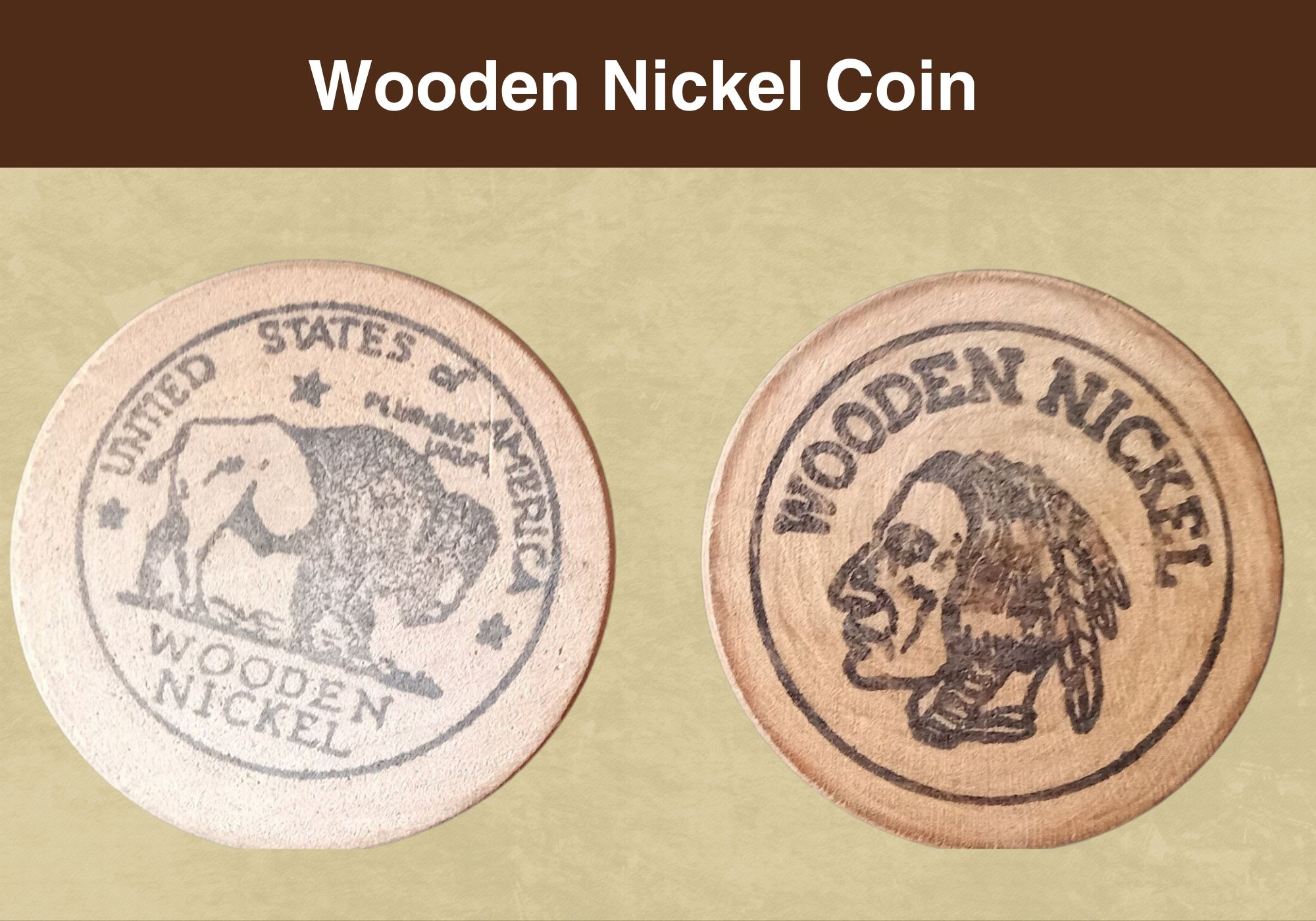
Coin Value Contents Table
Have you come across a wooden coin and are curious about how much it can fetch you? Do you want to know whether you can use a wooden nickel as a legal tender to buy stuff?
You’ve come to the right place! We wrote this article to explain everything you need to know about wooden nickel coin value.
Wooden coins have a long and interesting history and remain quite popular today. Whether you want to sell or buy these novelty coins, it helps to learn more about their value, the different varieties, and the types of wooden nickels worth collecting.
History of The Wooden Nickel Coin
The wooden nickel coin was first used in the United States of America around 1866, right after the 1861-1865 civil war.
Economic ruin and a severe coin shortage were some of the consequences of that brutal war. So bad was the coin shortage that Congress authorized paper tickets to be used as a substitute.
During this time, some cities and towns also introduced 5-cent wooden nickel coins to help merchants struggling with small change.
However, the use of wooden coins in the 1880s was short-lived, and the country soon reverted to legal tender in the form of paper bills and metal-based coins.
Wooden nickels made a comeback in the 1930s during the Depression Era when yet another coin shortage struck.
At the peak of the economic crisis, some local banks began issuing wooden coins, which people could use to buy items at specific merchants.
Despite their role in times of economic hardship, wooden nickels never became legal tender and were used only as a temporary measure.
Still, these coins gained much popularity, with everyone from banks, museums, event organizers, and corporations printing their wooden nickels as souvenirs or as redeemable tokens for a marketing campaign.
Today, wood coins are not common. Still, some organizations make and distribute them not as legal tender but as commemorative coins, souvenirs, just-for-keeps, or short-use tokens.
Some coin dealers have a collection of old wooden nickels. But you should keep in mind that these coins are quite rare and hard to come by.
Also read: Top 10 Most Valuable Nickels Worth Money
Features of Wooden Nickel Coins
Let’s now look at the features of nickel coins made from wood.
There are different types of wooden coins. These originate from various sources such as banks, stores, political organizations, fun fairs, corporate organizations and companies, restaurants and many more.
Each coin will have a unique appearance depending on its origin. That said, wooden nickel coins share some common characteristics:
The Obverse of Wooden Nickel Coins
The early wooden coins featured the image of a left-facing Native Indian head. But, keep in mind that the United States Mint does not print these coins; rather, the nickels have different sources, with each source making and printing its own design.
Typically the obverse side of a wooden nickel would show the coin’s assigned monetary value, usually 5 cents. Most also have the words “wooden nickel’’ printed on the front side.
The obverse may also show the coin’s origins, including the name of the issuing entity, for example, a bank, store, or restaurant. It may also indicate the town or city of origin, such as Las Vegas or Minnesota.
The Reverse of Wooden Nickel Coins
The reverse side of older wooden nickel coins will typically feature a hunched bison with the words United States of America printed around the lower part.
It is common for wood coin issuers to print witty words on the reverse side. Sometimes, the print on the reverse gives instructions on how and where you can use the coin.
One detail you may notice on the reverse side is the coin’s origin, whether it has come from Pennsylvania, Washington or any other state or city.
Other Features of Wooden Nickel Coins
Wooden nickel coins are generally very simple. Unlike real nickels or metal-based coins printed by the U.S. Mint, wooden coins do not have extra features such as mint marks, cameo contrasts, or rimmed edges.
Wood-based coins are slightly thicker than real nickels. The diameter of a wooden nickel may vary from one issuer to another.
That said, many issuers try to ensure their wooden coins are the same size as a metal nickel.
Check out this video to learn more about the history of wooden nickel coins and how these coins were made in the past.
Also read: Top 17 Most Valuable Buffalo Nickel Worth Money
Wooden Nickel Coin Value Guides
The value of a wooden nickel will depend on factors such as rarity, condition and the type of coin.
As a general rule, old, antique coins in good condition tend to fetch more than newer coins. Commemorative coins, such as those celebrating a national holiday, event, brand or person, may also have a higher value.
All in all, whether you want to buy or sell them, wooden nickel coins are typically affordable, allowing you to build a collection without worrying about spending too much.
Wooden nickel coins can be worth between $1 and $5 depending on the coin’s age and condition. Some antique wooden coins can fetch as much as $50, while newer ones may be worth as little as a few cents.
One of the most expensive wooden coins is the Olsen 1993 Liberty specimen nickel, worth a whopping $3,737,000.
Another high-value wooden nickel is the Buffalo Wooden Nickel, which imitates a 1918 doubled die obverse nickel minted in Denver. This wooden coin is worth $350,700.
The Buffalo Wood Nickel of 1926, which imitates the metal-based Buffalo nickel, was auctioned for $322,000.
Less expensive examples of wooden nickel coins include a commemorative nickel issued to celebrate the tenth anniversary of Apollo 11. This antique coin was sold for $600.
As mentioned, coins made of wood are not legal tender and lack features such as mint marks. The mintmark can influence the value of regular coins, which is not the case with wooden coins.
Next time you consider buying or selling nickel coins made from wood, you should remember that factors such as the coin’s rarity, condition, use, and type will have a bearing on its value.
Also read: Top 17 Most Valuable Jefferson Nickels Worth Money
Wooden Nickel Coin Grading
Wooden nickel coins are not graded the same way as regular metal-based coins. In fact, there is no official grading system for wooden coins.
Wooden nickel coin grading is generally sentimental, i.e. a coin will be graded based on people’s feelings and perceptions. Wooden coins are more commemorative, temporary, and emotional than transactional.
There is no objective way to measure how much a wooden nickel coin is worth. Even coin dealers will likely use their own perceptions, sentiments, and a bit of history when valuing a wooden coin.
Wooden Nickel Coin Errors
There are no known wooden nickel coin errors. Although some financial and state institutions authorized wooden coins at some point in history, these coins have never been recognized as legal currency.
The U.S. Mint does not make wooden nickel coins; therefore, these coins have no known errors or variations.
In addition, there are so many types of wooden nickel coins for anything and everything under the sun it would be hard to list all wooden coins out there that are improperly printed.
Also read: 14 Most Valuable Nickel Errors Worth Money
FAQ
What is the use of wooden nickels?
Wooden nickels are not a legal currency you can use to buy stuff. On the contrary, these coins serve a more commemorative and brand marketing function. Organizations sometimes issue their patrons, fans or customers wooden nickels to use as redeemable tokens for a marketing or promotional campaign to encourage sales or brand awareness.
Are there real wooden nickels?
Wooden nickels were introduced to society many decades ago, but they are still popular today. That said, wooden nickels are not real money; they are not real nickels, and in most places, you cannot use them the same you would use real coins produced by the U.S. Mint.
How much are wooden nickel coins worth?
Wooden nickel coins can be worth hundreds of thousands or a few cents. Their value depends on factors such as their age, condition, type, and use. Antique coins in good condition and holding significant sentimental value can be worth hundreds or thousands of dollars. That said, since these coins are generally just mementos, you can buy them for a few dollars. Unless you own unique wooden nickel coins with a high sentimental value, don’t expect to make a fortune from these coins.

